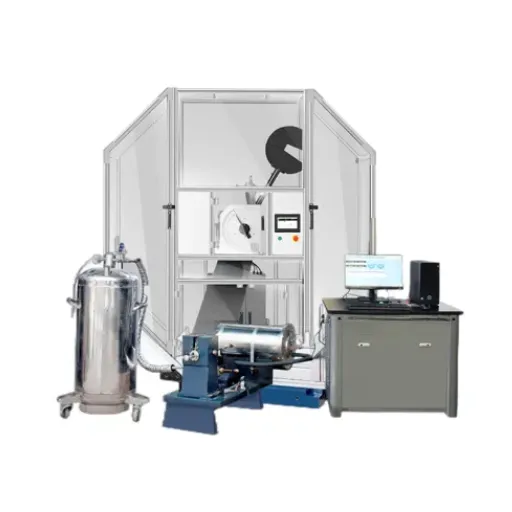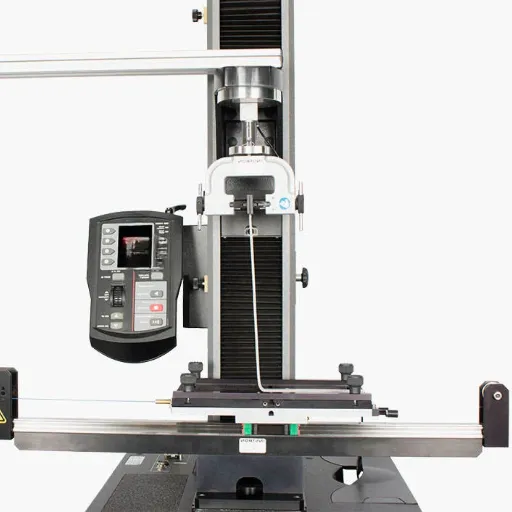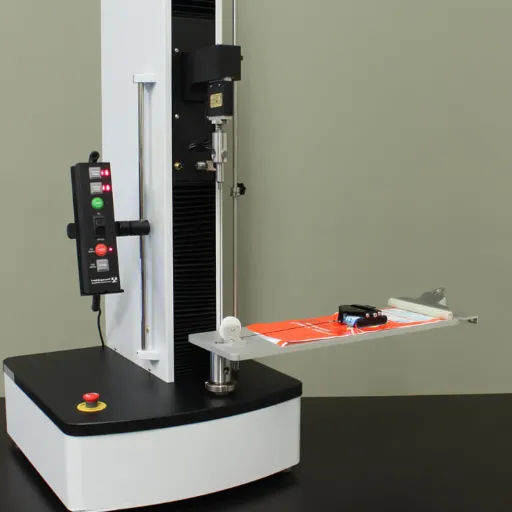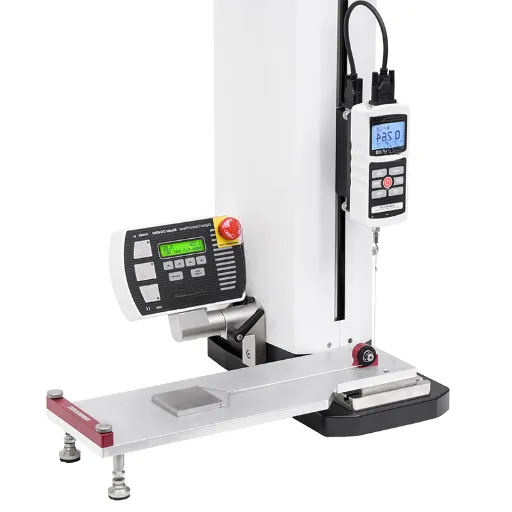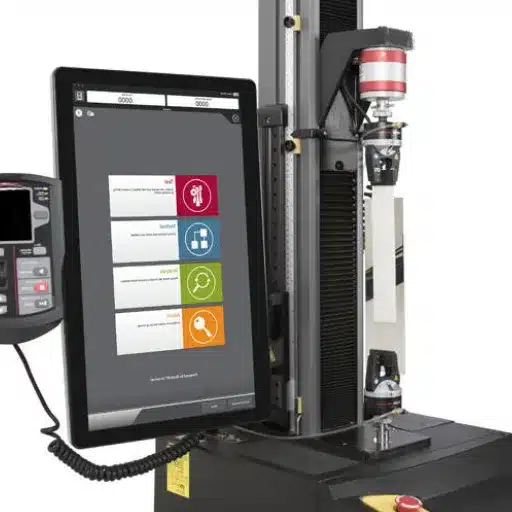Ensuring reliability in materials, especially when subjected to extreme environmental conditions, requires exacting testing procedures. An impact tester, or an impact test machine, is an example of such a testing devices used in evaluating materials. Safety and quality assurance depend on understanding a material’s ability to withstand a forceful blow at a low temperature, whether it is an aerospace part or a piece of industrial plastic. This blog intends to explore low temperature impact tests, their significance and operation, and the relevance of these machines in different fields. For anyone dealing with materials, such as engineers and quality assurance personnel, or anyone interested in the materials field, this tutorial will shed light on a very important aspect of testing.
1 Understanding Impact Testing Machines

What is an Impact Test?
An impact test evaluates the capacity of a material to resist sudden and severe forces or shocks without failure. It is used to assess the resilience of a material, which is the amount of energy a material can absorb while undergoing deformation. This is very important in assessing the material behavior in impact loading and dynamic loading applications.
The test is performed by impacting a specimen of the material with a specified force. An instrumented weighted pendulum or another standardized tool can be used. The material’s energy absorption during impact is calculated, which helps in assessing the brittleness of the material. The test results are influenced by loading temperature, material type, and any defects or structural flaws.
Key Point: Impact testing is important in safety-critical industries like construction, automotive, and aerospace. For example, impact testing enables engineers to pick the appropriate materials for severe environmental or high-stress situations. Thus, engineers can be certain that materials will not fail prematurely and jeopardize the safety of the system. Assessment of materials using this kind of test is part of the materials quality control and selection criteria.
Types of Impact Testing
Impact tests are performed to understand how a material behaves when subjected to sudden impacts or shocks. The drop weight tests, the Charpy impact test, and the Izod impact test are the common impact tests. All of these methods test the impact toughness of the material and give valuable information regarding the strength and durability of materials.
Charpy Impact Test
Uses a pendulum to strike a notched material sample. Determines energy absorbed during fracture.
Izod Impact Test
Similar to Charpy but strikes vertically held material. Appropriate for testing plastics and polymers.
Drop Weight Test
Evaluates fracture resistance by dropping weight from predetermined height. Suitable for larger samples.
Collectively, these impact tests enable the engineers to choose the right materials that satisfy important safety and performance metrics in different fields of manufacturing.
Importance of Low Temperature Testing
Frost testing is necessary to confirm that a material will properly function in colder environments. A great number of materials tend to lose their flexibility and become brittle, among other changes in their structural composition, when subjected to colder environments. Tests of this nature help in pre-empting problems and enabling the reshaping of materials to suit even the harshest latitudes.
Critical Industries Requiring Low Temperature Testing:
- Aerospace: Aircraft components must function safely at freezing temperatures
- Automotive: Vehicle parts need reliable performance in cold climates
- Construction: Infrastructure materials like steels and polymers in cold regions
In addition to safety considerations, low-temperature testing improves how long a product lasts. Knowing how a material performs in frigid conditions helps designers create products that are subject to less wear and tear. This testing method thus helps maintain the set performance level for a product, ensuring quality in addition to dependability in environments where failure is not an option.
2 Low Temperature Impact Testing
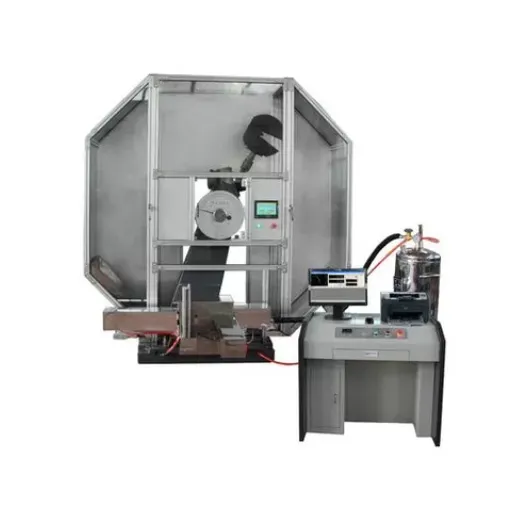
Overview of Low Temperature Impact Testing Machines
Testing at low temperatures requires special devices that can test materials using the impact testing devices at low temperatures. These devices can create low temperatures to test materials using the impact testing devices. The main reason to test materials using impact testing devices at low temperatures is to understand materials performance with an impact testing device at low temperatures. These devices help test materials to understand if they can endure impacts at low temperatures without becoming brittle and cracking.
Key Components:
- Specialized cooling devices
- Impact devices with designed hammers
- Deformation and crack measurement systems
Data Obtained:
- Energy absorbed during impact
- Mode of failure analysis
- Material behavior assessment
Testing at low temperatures using impact testing devices is very important in the aerospace, vehicle, and building industries, among others, since the materials used in such industries are subjected to very extreme conditions. It is very important to understand the behavior of such materials. This will also enable the improvement of the products being manufactured and ensure the overall durability of the products is improved.
How Low Temperature Affects Material Toughness
Material toughness is critical in any mechanical system. The behavior and characteristics of materials have to be well understood, especially in extreme environments—for example, low temperatures. At low temperatures, atomic mobility is greatly reduced, which greatly restrains the material’s capability to take in energy while undergoing an impact or deformation. For example, materials that may be ductile around room temperature can become brittle in low-temperature environments, where fractures are more probable.
Ductile-to-Brittle Transition
The ductile-to-brittle transition is observed with metals and polymers. The transition temperature, also called the ductile-to-brittle transition temperature (DBTT), depends on the type of material and its composition. For instance, steel may become brittle at temperatures below zero, which is why engineers and designers take special care when dealing with alloys like steel in cold regions, while materials like aluminum retain their toughness because of their specific properties.
In order to understand how severe the effects would be when reduced toughness is encountered, materials testing at low temperatures becomes necessary. Such understanding leads to proper selection of the materials, changing the design, and even creating new specialized alloys or composites for better performance. Hence, the safety and reliability of the products and structures that are to operate in extreme conditions is ensured.
Applications in Various Industries
AI impact testing machines are an integral part of a large number of industries, all of which require the use of materials that are able to provide reliable performance even under extreme stress. The ability of a material to endure and continue to function under sudden and harsh impacts is a parameter that needs to be tested, and impact testing machines provide this. The construction, automotive, and aerospace industries, among others, require impact testing to be able to provide reliable and safe materials and components.
Construction Industry
Impact testing machines are employed to test and verify the performance of construction materials such as steel, concrete, and composites. The testing is necessary to confirm that the construction will be able to withstand unpredictable forces and maintain safety and structural integrity. The forces include heavy loads and even natural disasters such as earthquakes and harsh weather.
Aerospace & Automotive
Impact testing in the aerospace and automotive industries is vital to ensure safety compliance. From aircraft to vehicle crashes, these sectors require advanced testing of safety devices and vehicles to make sure all safety standards are met. Impact testing guarantees the use of safe materials and helps to avoid failures of structural components.
The testing makes it possible to detect areas of the material that are weak, which allows engineers and builders to appropriately tailor the design and selection of the materials. They also ensure that the materials and products are testing machines bring a lot of innovation and progress in technology and materials.
3 Components of Low Temperature Impact Testing Systems

The Role of Temperature Chambers
Temperature chambers are vital components of low temperature impact testing systems because they provide the temperature-controlled environment necessary to simulate extreme cold environments. Such chambers enable the testing of materials and parts at temperatures that match the actual environments where performance at low temperatures matters. This demonstrates that the material and the component can perform well under extreme conditions, endure the impact, and preserve its shape and function.
Why Temperature Chambers Are Essential:
- Enable testing under relevant impact temperatures
- Help identify material brittleness and potential failures
- Provide reliable testing for quality assurance
- Support strict safety and performance protocols
Charpy Impact Test Mechanics
Impact behaviour of materials can be examined using the Charpy impact test. The test is essential in estimating the brittleness of a material especially after impact forces in sudden shock loading. The test also helps rate materials especially the automobile and aerospace industries that are dependent on performance under a range of temperatures.
Charpy Test Process:
In this test, the notch of the material is struck by a weighted pendulum, which measures the amount of energy hits to break the material. It provides an understanding of the material’s impact performance as soon as extreme forces are hit because its behaviour is tested during real materials extreme force failure, which is extremely useful. The notch is extremely important to concentrate the stress for accurate and reliable material impact resistance assessment.
Key Benefit: Components that absorb a lot of energy in the test are tougher and less likely to undergo brittle fracture at low temperatures.
Pendulum Impact Testing Machines Explained
Pendulum impact testing machines are used to study the impact resistance of different materials. They function by dropping a weighted pendulum from a specific height, which then strikes a test sample. The toughness and impact resistance of the material can be evaluated by how much energy it is able to absorb during the impact. This type of evaluation is performed to understand the material’s behavior when subjected to real world impacts.
Materials that absorb higher amounts of energy and exhibit more impact resistance are likely to be more reliable, safe, and durable. Such materials can be used in the manufacturing of critical components of aerospace and automotive sectors. Impact energy results of different materials are, therefore, consolidated to aid the construction industries concerned with the use of low-temperature framed structures such as bridges, off-shore platforms, and tunnels.
Industry Reliability: Industries that deal with products having structural, mechanical, or functional safety depend heavily on pendulum impact testing machines. Because they standardize the testing procedure, the results of their testing are dependable and can be reproduced. This dependability enables them to be extremely useful in quality assurance, guide materials research, and enable manufacturers to comply with the required safety and performance criteria.
4 Choosing the Right Testing Machine

Key Factors to Consider
Temperature Control Features
The machine must be capable of reaching the target low temperature and holding it steadily. Choose machines that have state-of-the-art cooling systems and proper insulation to keep temperatures steady during the test.
Impact Energy Capacity
Verify if the machine can produce the impact energies needed for your particular materials and use cases. Testing machines that have adjustable energies offer more advantages as they can be used for different tests and still yield correct results.
Operation & Data Recording
Look at how easy it is to operate and record data. Machines that have simple to navigate controls and automated sequences reduce possible mistakes by operators and make the test simpler. Data recording features and built-in software make it easier to generate reports.
Compliance Note: Check also if the machine follows the required testing standards, as this will help in complying with certain regulations. Along with the reporting features, these elements are vital in guaranteeing that the test machine aids your quality control workflow in an effective as well as precise manner.
Accuracy and Calibration Standards
The precision of impact testing machines designed for low temperature environments plays a critical role in testing reliability and repeatability. Such machines must be calibrated correctly in order to capture the precise energy absorbed during an impact test within specified conditions. Such calibration standards that include validation of the machines temperature controls and alignment of the machines sensors are critical to the precise functioning of the machines.
Calibration Standards
In order for low temperature impact testing machines to have precise reliability, they need to be calibrated as per such testing norms and regulations as the ASTM or ISO, along with correct guidelines. These regulations and standards set the acceptable bounds for measurements as well as the importance of working with maintained environmental conditions during working.
Machines calibrated and maintained as per ISO or ASTM norms can be relied upon to measure the material properties even at stringent temperature conditions.
Maintaining recalibration schedules along with routine maintenance helps in maintaining accuracy for a long time. Consistent usage, occupational environment, and aging can lead to performance shifts if not taken care of. Performing maintenance checks and recalibrations on schedule by certified personnel guarantees proper and precise functioning of the machine. Although it requires a commitment of time and resources, ensuring precise calibration enhances the dependability of the tests and promotes ongoing material quality verification.
Durability and Maintenance of Testing Machines
Machines that perform low temperature impact tests are built with the express purpose of providing data on materials’ minimum temperature impact temperature. Preserving such a machine’s functionality presupposes a set of maintenance practices that, if not adhered to, lead to a sharp decline in service life. Operating the machine outside the limits set for it will cause significant deterioration in functionality. As such, machines of this nature are very sensitive and require special care.
Regular Examinations
Checking moving parts for rust, performing lubrication to reduce mechanical breakdown, and examining cooling apparatus and temperature sensors.
Routine Recalibrations
Vital for ensuring accurate results. Trained specialists should perform recalibrations to ensure compliance with certifications and guarantee machine accuracy.
Through these maintenance procedures a low temperature impact testing machine remains fully functional and dependable for a longer duration.
5 Innovations in Low Temperature Impact Testing

Automated Testing Features
The automated testing features in low-temperature impact testing machines, automates sample loading and off-loading, minimizing human touchpoints and speeding up the testing process. As a result of precision and consistency, low-temperature impact testing machines that conduct tests have programmed automation systems that conduct the tests, reducing their chances considerably. Processes like alarming sample handling, data collection, and test results becoming more efficient and faster low-temperature impact testing machines provide more test results than the manual ones.
Automation Benefits
- Elevated level of reproducibility and precision
- Guaranteed consistent test conditions and parameters
- Essential for materials testing and certification compliance
- Advanced data management features included
Furthermore, automated systems are equipped with more sophisticated data management features. These capabilities facilitate test data recording, saving, and analyzing to facilitate compliance with documentation mandates. Operators can produce comprehensive reports in less time, thanks to the built-in reporting functionalities, therefore enhancing decision-making through access to advanced data.
Data Analysis Tools and Software
Chill impact testing machines are used to test the impact properties of materials at low temperatures. They have an essential functionality that is the integrated data analysis tools and software to ensure the precision and reliability of the testing results. Such tools are instrumental in refining the raw test data to really useful metrics, enabling an efficient evaluation of the material’s performance.
Software Capabilities
Real-time Data Capturing
Follow along with tests and understand results
Statistical Data Evaluation
Comprehensive analysis and interpretation
Results Documentation
Energy absorbed, fracture characteristics, temperature relations
Also, having uncomplicated software controls makes the system operable to personnel with minimal training. Automated parameter adjustment, data backup, and compatibility with other test equipment are some of the operational features that improve productivity. Using these data management solutions, organizations can simplify their material testing workflows and uphold stringent quality standards in their analyses.
Eco-Friendly Designs and Sustainability
Low temperature impact testing machines are an essential part of the testing process, and low temperature impact testing machines are an excellent example of such testing machines, as their designs reduce energy use and waste, thereby promoting sustainability. For accurate testing, such machines must maintain stable low temperatures, and efficient cooling systems are a staple for such machines. Furthermore, the low temperature impact testing machines have modern designs that make use of recyclable materials, so the environmental impact of the machines is minimal during their entire life cycle.
Resource Efficiency
Automated systems eliminate unnecessary precision, reducing energy and material consumption during repetitive testing. Minimal maintenance requirements lead to longer life cycles.
Carbon Footprint Reduction
Advanced software enables remote observations and data handling, reducing physical and transportation-related interventions while maintaining minimal environmental impact.
Finally, advanced software features in low temperature impact testing machines support eco-friendly testing procedures. Such features enable remote observations and data handling, reducing the physical and transportation-related interventions. These features ensure that proper testing of the impact machines is conducted with the assurance of minimal carbon footprint. Moreover, such testing machines allow low temperature impact testing of materials while complying with global sustainable procedures, making them reliable and environmentally friendly.
6
Frequently Asked Questions (FAQ)
Q What exactly is a low temperature impact testing machine?
A: An impact resistance testing device operating at low temperatures is referred to as a low temperature impact testing machine. Specimens are tested on this type of apparatus using methods such as the Charpy Impact and Izod tests, where the test piece is allowed to absorb a test ana hence a particular calibrated energy is absorbed by the specimen under the sudden impact.
Q How is a low temperature impact testing machine used?
A: A low temperature impact testing machine functions by inserting a sample into a testing chamber that can attain low temperatures. Following the sample adjustment and cooling to the target temperature, a pendulum or a drop weight prepared to strike the sample is released. The machine calculates the impact energy absorbed, and the amount of low temperature flexibility or brittleness and ductility of the material is derived from it.
Q What kinds of materials can be tested by a low temperature impact testing machine?
A: Testing machines of this kind can be used to test metals, plastics, and other materials. The test to be performed and the application intended determines the kind of material to be tested.
Q Which standards are often followed for low temperature impact testing?
A: The ASTM and ISO standards are the most common for low temperature impact testing. These standards also give the appropriate test methods to be used for testing, such as the Charpy notch impact test method and the impact test method for metals, which can be applied to low temperature impact testing to ensure dependable testing.
Q What is the rationale behind the need for low temperature impact testing?
A: As the name suggests, this type of impact testing identifies impact properties at low temperatures using impact testing. It therefore is of great assistance to manufacturers, for example, in the aerospace, automotive, and building sectors, who need materials tested so that their behaviour data can be obtained at low temperatures.
Q Is it possible to automate the low temperature impact testing machine?
A: Yes, as many modern low temperature impact testing machines are equipped with automatic control temperature system and a digital display, which makes them more precise, easier to use, and more reliable. Testing automation eliminates the chances of error and a consistent result is guaranteed.
Q What is the difference between Charpy and Izod tests in impact testing?
A: The Charpy test involves a notched specimen being struck on the opposite side of the notch, while the Izod test has the notch facing the impact. Both methods measure the energy absorbed during impact but are used in different contexts depending on the testing requirements.
Q How does temperature affect impact testing results?
A: Materials behave in a specific manner due to temperature changes in impact testing. Impact testing and its results are influenced by whether it’s at a higher or lower temperature. Lower temperatures tend to make a material brittle, and therefore certain materials that are temperature sensitive and used for colder applications show a better behavior due to the cooling, as impact energy of these materials are distinctively lower.
Q How does conditioning influence low temperature impact testing?
A: Cooling the specimen to the targeted low temperature prior to testing, as explained above, is the specimen conditioning. Low temperature impact testing cannot do away with this step as it is crucial for specimen cooling. This ensures that the material is at the specified temperature for the impact test so the properties are fairly represented.
Q What are the advancements in low temperature impact testing machines?
A: While little has changed with the basic design of the testing machine, the additional features offered with these machines contribute to their overall advancement. Using compressor cooling technology allows these machines to quickly reach the desired temperature, while an improved digital user interface offers easier operation. Furthermore, the precision of impact energy measurement has been improved to offer users more reliable results in testing.
7
References
-
ZwickRoell – A leading manufacturer of impact testers, including solutions for low-temperature testing. Their website provides detailed information on products and testing processes. Visit ZwickRoell.
-
JJ-Test – Information about the Hit-245x low temperature pendulum impact testing machine, which uses a bipolar refrigeration system for tests as low as -50°C. Visit JJ-Test.
-
Springer Link – A chapter discussing Charpy Impact Testing at 20°K, which is a method for determining material toughness at low temperatures. Read on Springer Link.
-
ASME Digital Collection – A study on a low-temperature modification to the Charpy Impact Test, providing insights into impact fracture toughness measurements. Explore on ASME.

